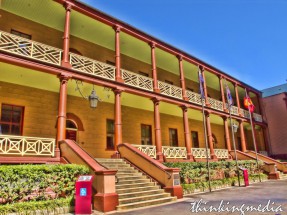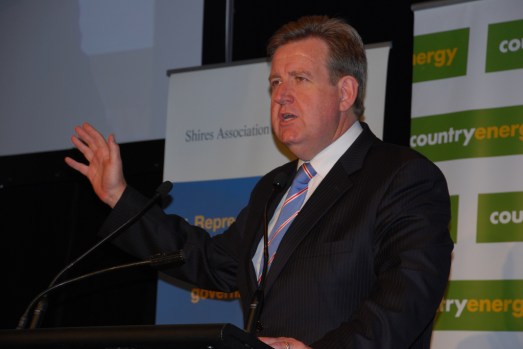Local councils and academics have ripped into the NSW government’s execution of its grand plan to create fewer, super councils in the first of five public hearings into local government reform which got underway yesterday.
The General Purpose Standing Committee 6 has been tasked with scrutinising NSW Premier Mike Baird’s controversial Fit for the Future (FFTF) agenda, which has been hotly opposed by many of the state’s 152 councils, who view it as an attempt to force council mergers by imposing unrealistic deadlines and narrow criteria.
Yesterday’s speakers included Local Government NSW President Keith Rhoades, who took the government to task on its methods and argued that there was no evidence to suggest mergers could drive down rates, deliver better services, economies of scale, or improved infrastructure.
He told the inquiry that Queensland and Victoria councils raked in more revenue from rates after council amalgamations (Queensland in 2008 and Victoria in 2012), compared with NSW councils the same years. Revenue from rates was 14 per cent higher in Queensland and nearly 40 per cent higher in Victoria, he countered.
“The argument that bigger is better lacks evidence and is in fact contradicted by a larger body of research and real life experience that challenges that proposition,” Mr Rhoades said.
“Not only is there a distinct lack of evidence to support the government’s claims, there is also hard evidence that forced amalgamations are strongly opposed by residents and ratepayers.”
Representatives from Marrickville Council argued that the government had failed to adequately consider factors such as service quality and scope or consumer satisfaction levels when judging their Fit for the Future applications because of its obsession with scale and capacity in order to push through mergers.
Other speakers included Professor Graham Sansom, who headed the Independent Local Government Review Panel (ILGRP), which set out options for local government reform in a 2013 report.
Professor Sansom’s written submission to the inquiry criticised the government – and councils – for once again turning the serious issue of councils’ long-term survival into a reductive argument about ‘forced’ mergers, without addressing the underlying issues that needed to be fixed.
“The way Fit For The Future has been presented – especially the very substantial financial incentives it includes – and the way local government has responded, have brought us back to another heated debate about so-called ‘forced’ council amalgamations. That is both unfortunate and unnecessary,” he said in his written submission.
Professor Sansom said the ILGRP’s report had been misrepresented and poorly understood and that only 61 of the 144 councils required to submit a FFTF proposal were covered by the ILGRP’s ‘preferred options’ [not recommendations] to merge, the remainder requiring no change or the merger option given equal weight.
“The ILGRP did not argue that amalgamations are a panacea to the problems facing local government. It favoured a mix of some amalgamations – where appropriate and justified – and increased regional cooperation and resource sharing,” his submission said.
Instead he argued for a broad package of policy changes to precede or accompany any boundary changes, including improvements to councils’ revenue bases and borrowing arrangements, better resource sharing, stronger regional organisations and better governance.
Professor Sansom cautioned the NSW government against rushing the process and of being over-reliant on using the size of councils to predict their strategic capacity.
He said there should be restrictions on the NSW government’s “currently unfettered right to impose amalgamations and boundary changes more or less at will” and advocated full community consultation, more careful analysis of the options and greater impartiality from both sides, including a stronger, more independent Boundary Committee.
The Upper House inquiry, which will be chaired by Paul Green from the Christian Democratic Party, will examine the costs and benefits of council mergers for residents and businesses and their potential impact on rates, infrastructure investment, community representation and local employment.
Crucially, it will also look at how well the process of declaring whether a council is fit or unfit for the future has been managed, including the criteria used to assess financial sustainability, submission deadlines and benchmarking.
The inquiry will also assess the Independent Pricing and Regulatory Tribunal’s (IPART) role in the process, which has been criticised by the NSW Greens for having a “a politically biased formula” and of adding little independent value.
Areas the committee will examine are:
• The NSW Government’s Fit for the Future reform agenda
• IPART’s role in reviewing the future of local government in NSW
• The costs and benefits of amalgamations for local residents and businesses
• The financial sustainability of NSW local government, including measures used to benchmark local government compared with measures used to benchmark State and Federal Government in Australia
• The performance criteria and associated benchmarks used to assess local authorities in New South Wales
• The scale of local councils in New South Wales
• The appropriateness of the deadline for ‘Fit for the Future’ proposals
• The evidence of the impact of forced mergers on council rates drawing from the recent forced amalgamations, especially in Queensland
• Evidence of the impact of forced mergers on local infrastructure investment and maintenance; municipal employment and aggregate redundancy costs
• How forced amalgamation will affect the specific needs of regional and rural councils and communities, especially in terms of its impact on local economies
• The role of co-operative models for local government including Joint Organisations, Strategic Alliances, Regional Organisations of Councils, and other shared service models, such as the common service model.
There were 160 written submissions to the inquiry, the deadline for which has now closed, and the last public hearing is on August 24.
Comment below to have your say on this story.
If you have a news story or tip-off, get in touch at editorial@governmentnews.com.au.
Sign up to the Government News newsletter


